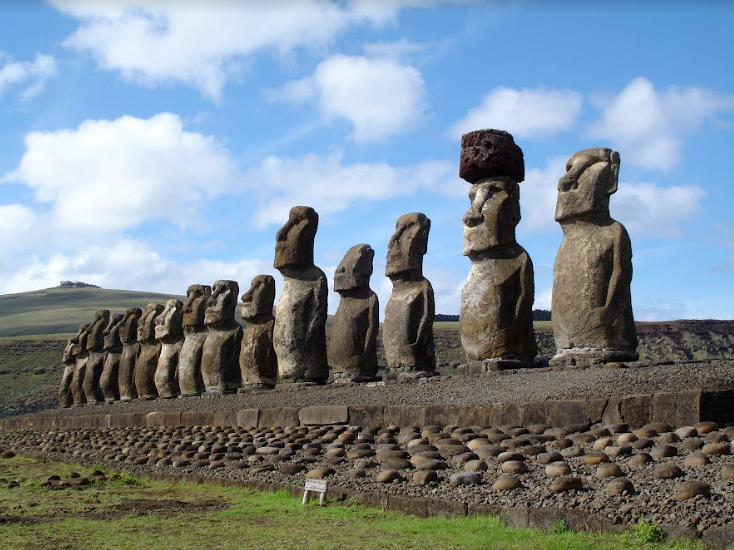Monthly Mysteries: Easter Island
Join Jacey Sola as he dives into the mysteries of Easter Island
The stones sit alone on Easter Island thousands of year later.
December 6, 2022
Easter Island, home to the large stone heads, also called Moai, and its origins have been a mystery for thousands of years. Located in the Southeast Pacific and near Chile, it has been a source of debate and research ever since its discovery on Easter Sunday in 1722 by European explorer, Jacob Roggeveen.
Historians and researchers are baffled by the fact that all that is left on the island are the stone heads, with no trace of life. How could these statues have possibly gotten here?
The most popular explanation is that the stone statues were made by Polynesian inhabitants who arrived on the island sometime around the years 600-1200.
According to Khan Academy, the Moai, or stone faces, were carved to remember and memorize ancestors and were a rich part of Polynesian culture. They are said to depict upper-status individuals and chiefs.
If the Polynesians made the statues, then where are they now? There have been a couple of speculated explanations.
One theory is deforestation caused a decline in the population. Easter Island is currently treeless, but researchers suggest that the island was previously covered with palm trees. These trees were most likely cut down, which caused a negative ripple effect in the ecosystem. Plants and animals disappeared because there were no habitats for animals and good soil for plants. Additionally, wood was also gone. Without the ability to make shelter, get food, and make boats, the population probably starved.
Another theory is that rats infested the island and caused a decline in the Polynesian population. They were a possible cause of the deforestation of trees and sources of disease.
Although there have been several attempts to find the truth of the mysterious island, none have ended in success. Easter Island remains one of the most mysterious geographical mysteries in history.



